Abstract
Electronic fetal monitoring (EFM) is an example of a medical technology that has been widely accepted since its introduction in the mid-1960s. However, review of the literature does not provide convincing evidence of EFM efficacy, and four recent, controlled, clinical trails show little if any benefit in terms of preventing death or long-term disability of the baby. Public and private policies have largely acted to encourage use of EFM, and none have acted to slow or prevent its spread. This need for mechanisms to assure the timely evaluation of new medical technologies before they are accepted as a medical practice has led to a new medical devices program in the Food and Drug Administration, consensus development groups at the National Institutes of Health, and congressional legislation to establish a new National Center for Health Care Technology.
Full text
PDF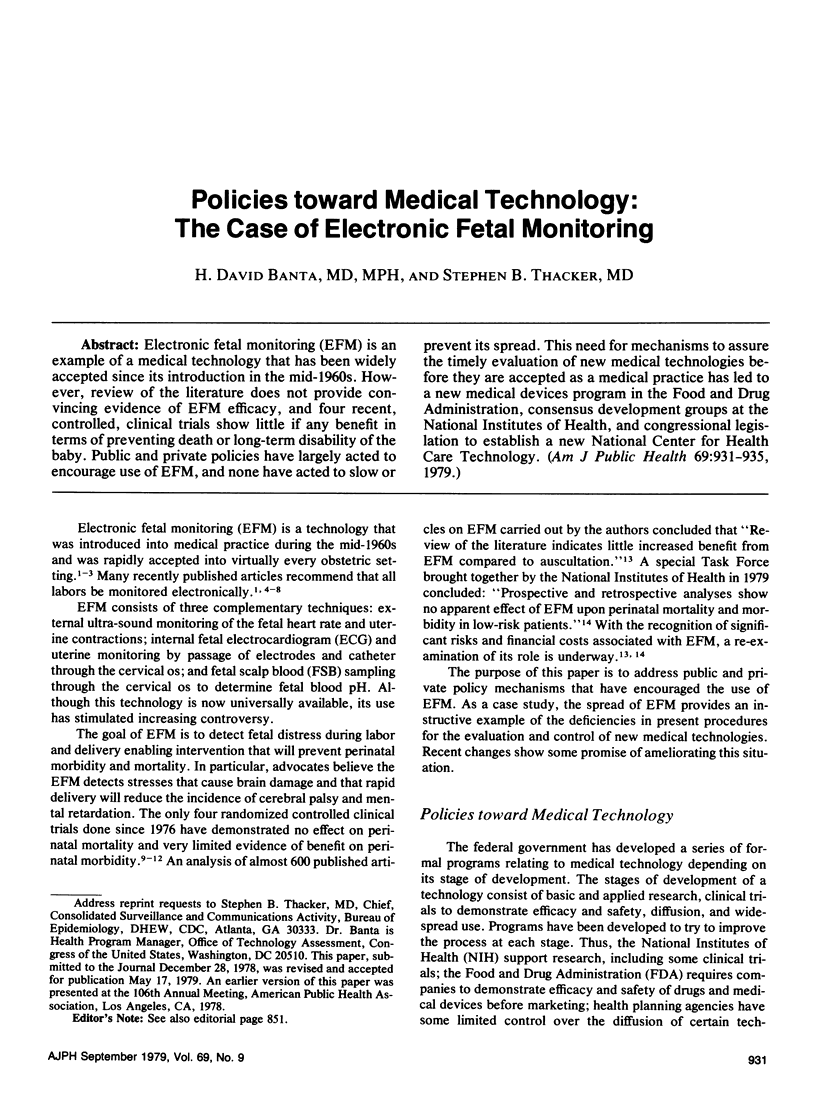
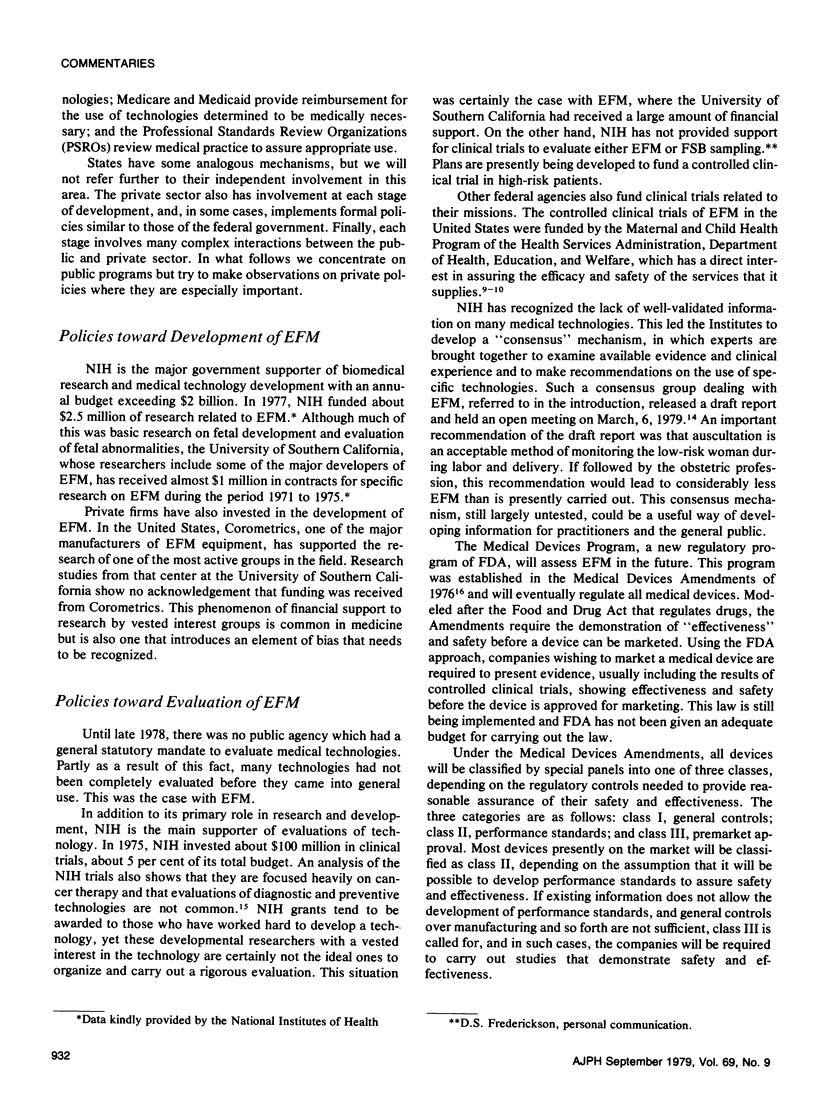
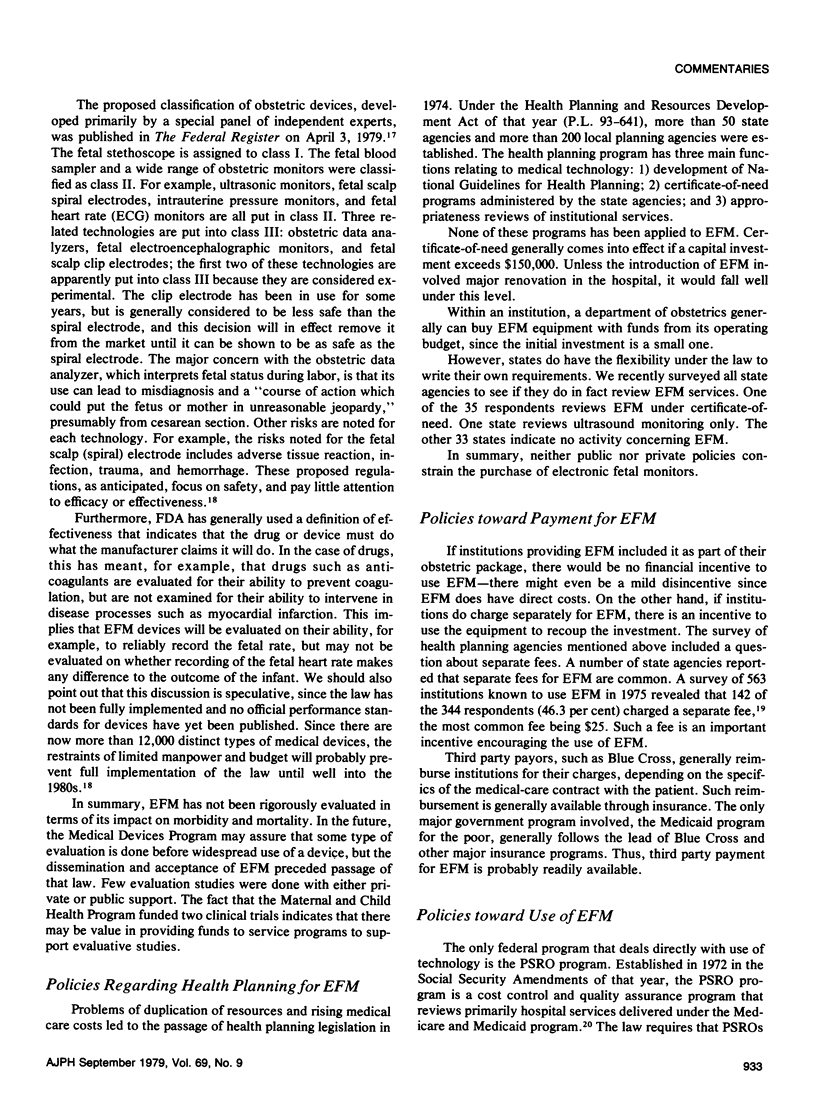
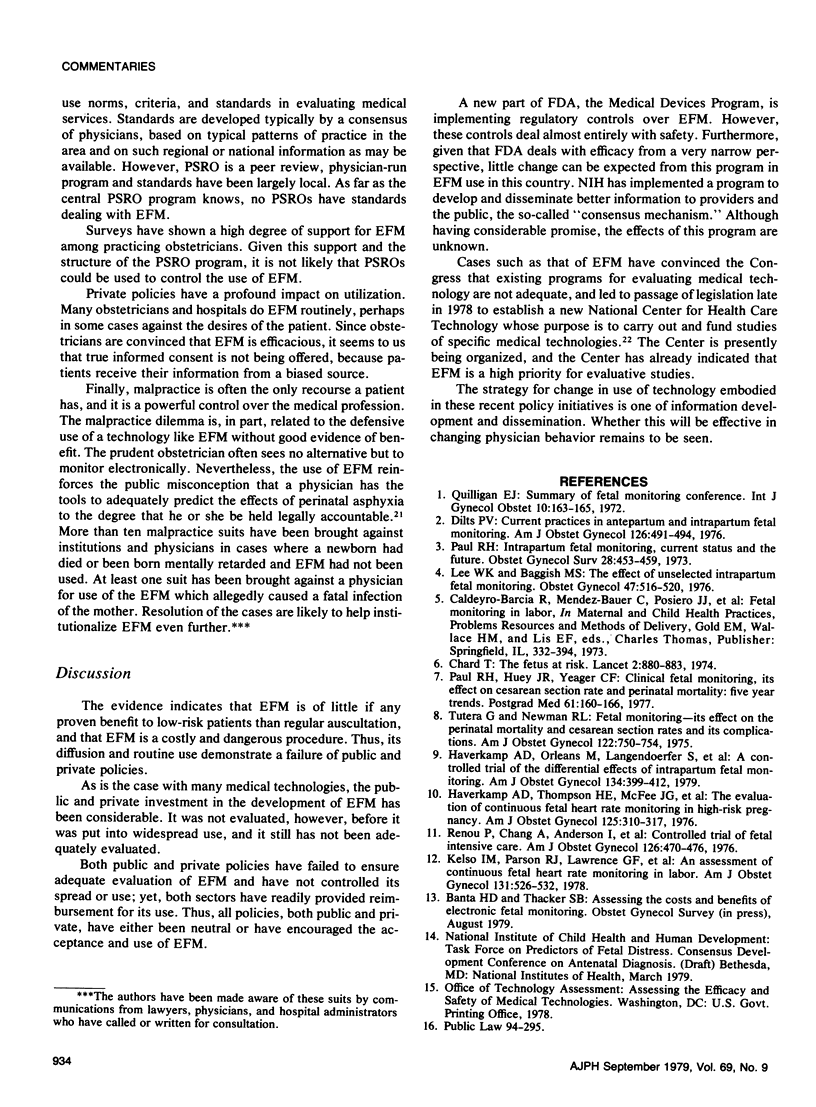
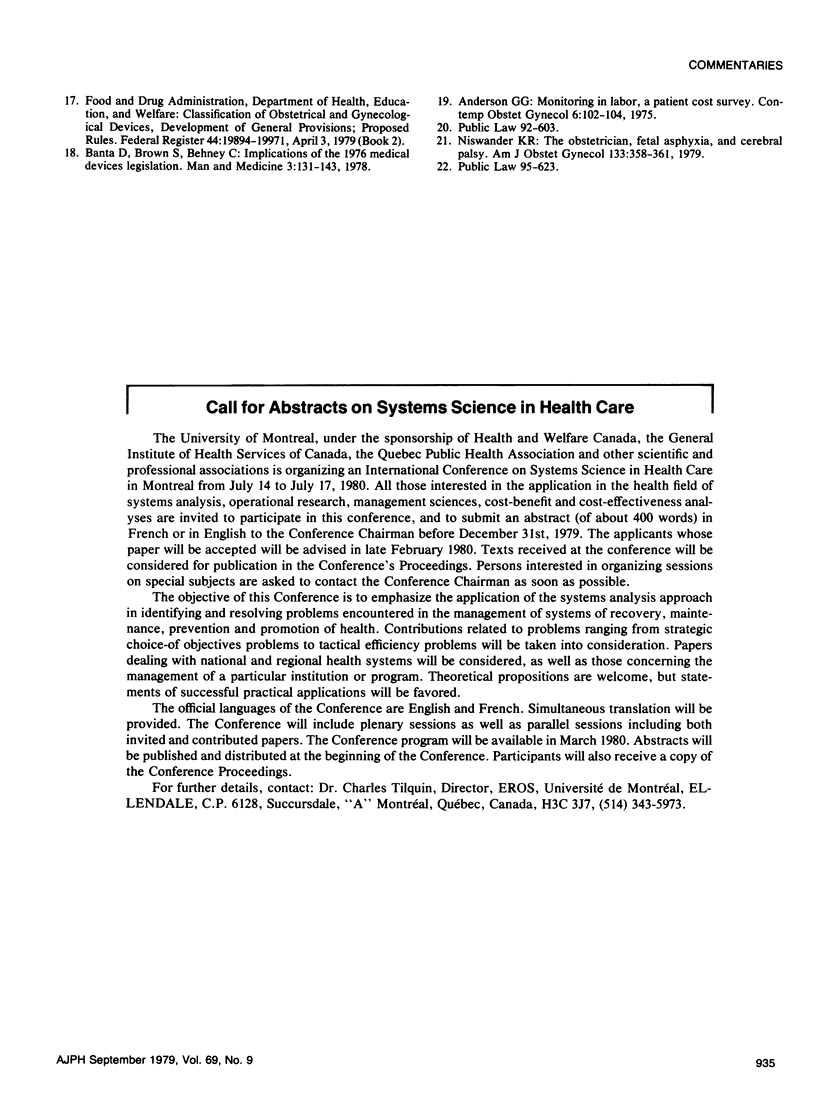
Selected References
These references are in PubMed. This may not be the complete list of references from this article.
- Banta D., Brown S., Behney C. Implications of the 1976 medical devices legislation. Man Med. 1978;3(2):131–143. [PubMed] [Google Scholar]
- Chard T. The fetus at risk. Lancet. 1974 Oct 12;2(7885):880–883. doi: 10.1016/s0140-6736(74)91212-4. [DOI] [PubMed] [Google Scholar]
- Dilts P. V., Jr Current practices in antepartum and intrapartum fetal monitoring. Am J Obstet Gynecol. 1976 Oct 15;126(4):491–494. doi: 10.1016/0002-9378(76)90645-1. [DOI] [PubMed] [Google Scholar]
- Haverkamp A. D., Orleans M., Langendoerfer S., McFee J., Murphy J., Thompson H. E. A controlled trial of the differential effects of intrapartum fetal monitoring. Am J Obstet Gynecol. 1979 Jun 15;134(4):399–412. doi: 10.1016/s0002-9378(16)33082-4. [DOI] [PubMed] [Google Scholar]
- Haverkamp A. D., Thompson H. E., McFee J. G., Cetrulo C. The evaluation of continuous fetal heart rate monitoring in high-risk pregnancy. Am J Obstet Gynecol. 1976 Jun 1;125(3):310–320. doi: 10.1016/0002-9378(76)90565-2. [DOI] [PubMed] [Google Scholar]
- Kelso I. M., Parsons R. J., Lawrence G. F., Arora S. S., Edmonds D. K., Cooke I. D. An assessment of continuous fetal heart rate monitoring in labor. A randomized trial. Am J Obstet Gynecol. 1978 Jul 1;131(5):526–532. doi: 10.1016/0002-9378(78)90114-x. [DOI] [PubMed] [Google Scholar]
- Lee W. K., Baggish M. S. The effect of unselected intrapartum fetal monitoring. Obstet Gynecol. 1976 May;47(5):516–520. [PubMed] [Google Scholar]
- Niswander K. R. The obstetrician, fetal asphyxia, and cerebral palsy. Am J Obstet Gynecol. 1979 Feb 15;133(4):358–361. doi: 10.1016/0002-9378(79)90050-4. [DOI] [PubMed] [Google Scholar]
- Paul R. H., Huey J. R., Jr, Yaeger C. F. Clinical fetal monitoring: its effect on cesarean section rate and perinatal mortality: five-year trends. Postgrad Med. 1977 Apr;61(4):160–166. doi: 10.1080/00325481.1977.11714552. [DOI] [PubMed] [Google Scholar]
- Paul R. H. Intrapartum fetal monitoring: current status and the future. Obstet Gynecol Surv. 1973 Jun;28(6):suppl–suppl:459. [PubMed] [Google Scholar]
- Renou P., Chang A., Anderson I., Wood C. Controlled trial of fetal intensive care. Am J Obstet Gynecol. 1976 Oct 15;126(4):470–476. doi: 10.1016/0002-9378(76)90641-4. [DOI] [PubMed] [Google Scholar]
- Tutera G., Newman R. L. Fetal monitoring: its effect on the perinatal mortality and cesarean section rates and its complications. Am J Obstet Gynecol. 1975 Jul 15;122(6):750–754. doi: 10.1016/0002-9378(75)90582-7. [DOI] [PubMed] [Google Scholar]


